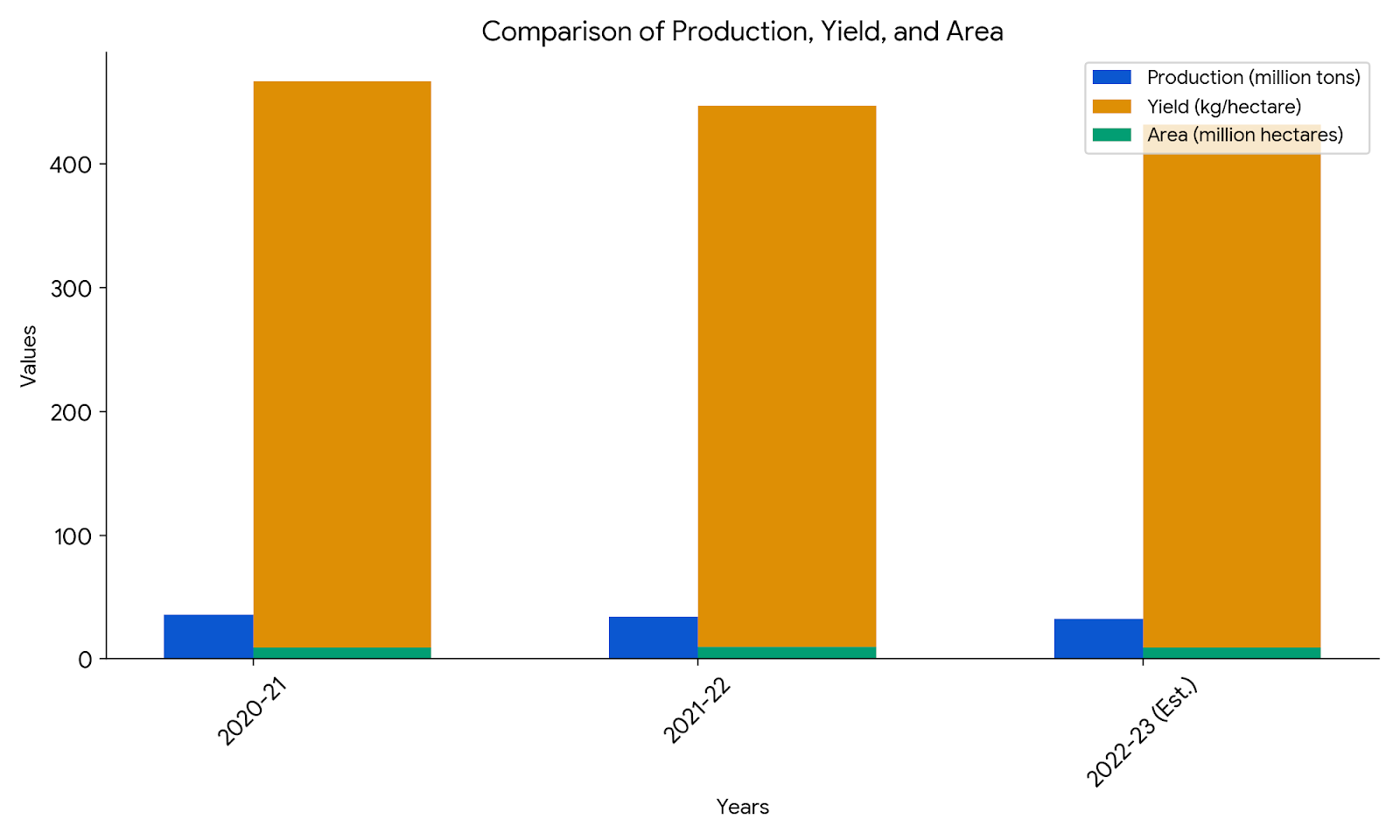Cotton Under Pressure: India's white gold struggles to shine.
India, the land where cotton is revered as ‘White Gold’ faces a complex scenario. While boasting of the largest area under cotton cultivation and being the second largest producer and consumer, the sector grapples with declining yields, climate change woes, and market access hurdles.
A tangled web of threats
There are several reasons for a drop in decline. And one major factor is climate change as erratic rainfall patterns, extreme weather events, and rising temperatures disrupt cotton production, jeopardizing yields and quality. Studies show India's water stress is impacting cotton production, while China, with better water management, boasts nearly five times the yield per hectare.
Also, India's cotton yield lags far behind global competitors like China, hampered by outdated Bt technology, pest infestations like whitefly and pink bollworm, contribute to India's abysmal cotton yield compared to global competitors.
Rising inputs costs are another factor as farmers struggle with rising costs of seeds, fertilizers, pesticides, and labor, while GM seed licensing fees add to the burden. Then there is the issue of limited market access as many growers lack direct access to markets and are forced to sell at lower prices to intermediaries. Moreover, alternative crops like pulses and oilseeds offer higher profitability, tempting farmers to switch cultivation and many farmers are opting out.
In fact, Maharashtra, India's leading cotton producer, exemplifies the sector's struggles. Farmers battle erratic rainfall, whitefly infestations, and depleting groundwater tables. Despite government initiatives like ‘Mission Cotton’ challenges persist, leading to yield gaps and lower income compared to global counterparts.
Table: Cotton output
|
Year |
Production (million tons) |
Yield (kg/hectare) |
Area (million hectares) |
|
2020-21 |
36.0 |
467 |
9.5 |
|
2021-22 |
34.1 |
447 |
9.6 |
|
2022-23 (Est.) |
32.5 |
432 |
9.4 |
A Stitch in time
A Parliamentary committee has recommended an ‘umbrella policy’ encompassing various interventions. This entails:
Overhaul cropping system: Implementing modern farming techniques like integrated pest management (IPM) and community-based seed banks to improve yields and sustainability.
Strengthen market linkages: Establishing digital platforms to connect farmers directly with buyers, eliminating middlemen and ensuring fair pricing.
Irrigation expansion: Increasing irrigated area to boost productivity and address water scarcity concerns.
Research & development: Investing in developing new, high-yielding cotton varieties resistant to pests and diseases.
Community seed banks: Preserve genetic diversity and empower farmers with resilient seed resources.
Value addition: Encourage local processing units for ginning, cleaning, and processing cotton fiber.
In fact, several government initiatives have been taken up to rivitalize cotton in India. PM Mitra parks scheme for example, establishes textile parks to attract investment and boost production. The PLI scheme incentivizes production of man-made fibers and technical textiles. Similarly Cotton Development Programme provides support under the National Food Security Mission. The Cott-Ally app raises awareness about Minimum Support Prices for cotton. Kasturi Cotton India is a branding initiative to promote Indian cotton globally. The NFSM cotton project demonstrates best practices for enhanced productivity. Samarth scheme builds capacity in the textile sector. While the amended ATUFS, facilitates technology upgradation in textile mills.
Successfully navigating these challenges requires multi-pronged efforts. Collaboration between farmers, communities, government agencies, and the private sector is crucial. Embracing sustainable practices, improving market access, and investing in research and development are key to unlocking the true potential of India's ‘White Gold’. By addressing these challenges and implementing effective solutions, India can ensure its cotton sector thrives in the years to come, weaving a brighter future for its farmers and textile industry.

